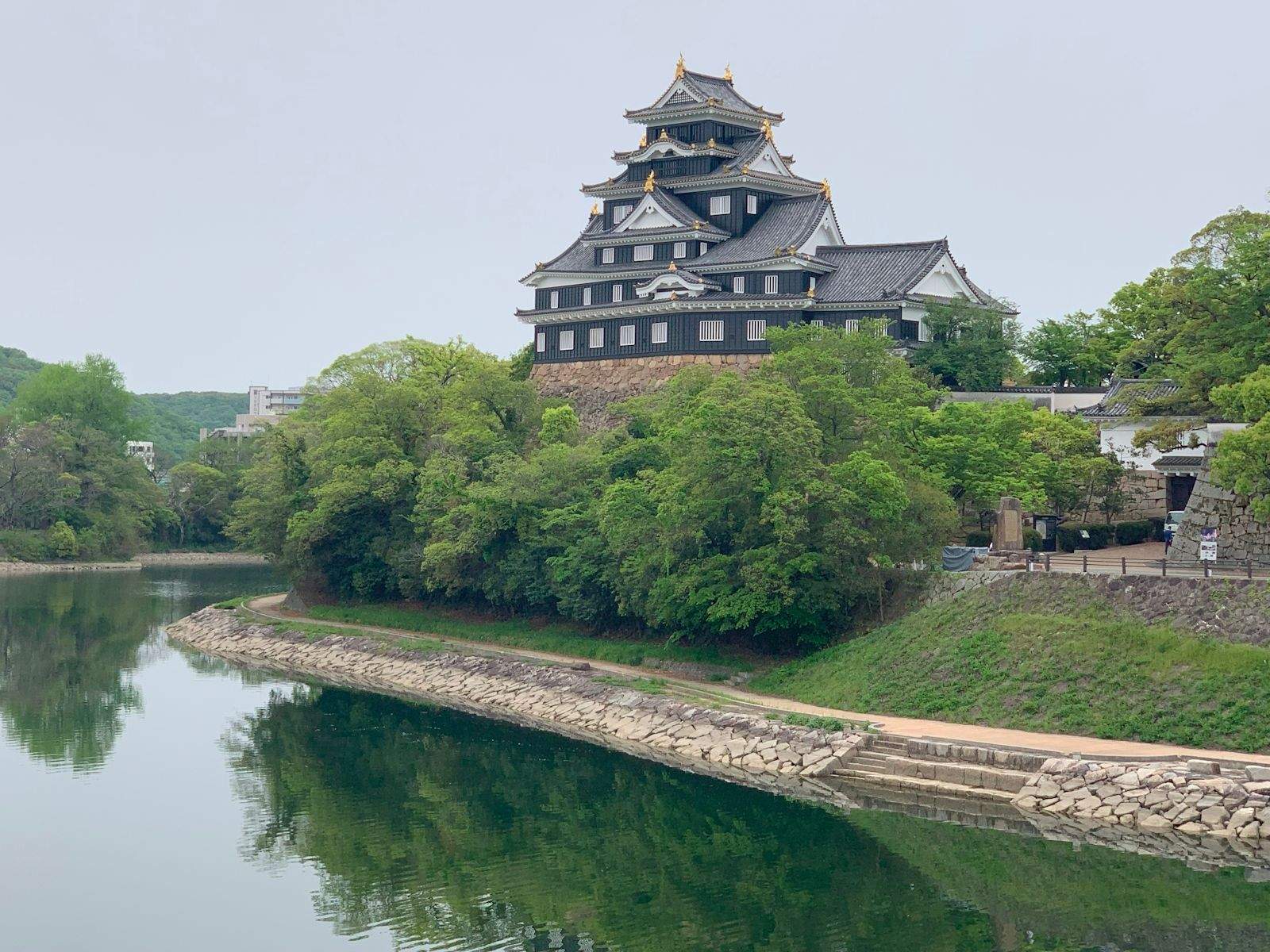Crafting a Weekend in Okayama
We went to Okayama for a break.
Not the kind of break you find on a mountaintop or in a temple, but the smaller, more surprising kind: in the clink of glass on a steel rod, the hiss of a torch flame, the slow clatter of rivets pressed into denim. We wanted to walk slowly, to make something by hand, to leave with less in our heads and more in our pockets.
We stayed just across the river from Okayama Castle, which looks less like a fortress and more like a stage set from a dream: black walls and gold trim climbing free from the trees. From there, Korakuen Garden was a short walk away. Early spring had turned it green with the gentle hue of new growth. We wandered around it before breakfast, sharing the paths mostly with dogs and their friendly walkers.
But the real story begins further south, in Kurashiki and Kojima, where the past still has a grip on people’s hands.
At the edge of Kurashiki, tucked into the back room of a modest house, we met Masakazu Sugiyama, a former mechanic turned glass artist. He makes kagerotama, an old form of glass beadwork once worn by warlords during the Sengoku period: tiny, molten galaxies frozen mid-spin.
We sat across from him at the workbench as he demonstrated the process: melting, turning, layering. It’s an act of control and surrender. The flame melts the glass as it will. Sugiyama-san builds his beads in silence, impossibly tiny flowers hidden within, improvising as the glass shifts beneath his tools.
Our turn came. The torch flared. My bead came out round and green, draped in ribbons of white, and it hangs from my neck on a thong as I write this. There’s a strange intimacy in holding a shape you made from fire. I didn’t know I’d be so attached to it.
Sugiyama-san told us Kurashiki is a city that "understands art with its hands." I believe him.
The next morning, we headed to Betty Smith Village in Kojima, the town that taught Japan how to sew denim. It began with school uniforms and industrial looms, then shifted toward fashion, eventually making Kojima a pilgrimage site for denim lovers.
Betty Smith is one of the oldest names in the business, and at their workshop you can buy jeans or you can build them yourself.
We picked our sizes, chose from dozens of rivets, buttons and patches. Some pieces were vintage, others gleamed like coins. The staff showed us how to align the press and step hard. It takes force. You feel the history in your leg muscles.
The jeans we left with aren’t merely the best-fitting pair I’ve ever owned. They're souvenirs in the old sense of the word: memory made tangible. They smell like cotton, metal and accomplishment. Victory.
We didn’t stay for long. Okayama isn’t a huge city, but you want to take your time. The cafés—minimal, sunlit, filled with quiet conversations and perfect pour-overs—deserve their own chapter. We visited just a few and still think about them. The same goes for ebimeshi, a local dish of shrimp and rice in a sweet, soy-dark sauce. It looks humble, but it sticks with you, like all the best meals.
If travel is about seeing sights, collecting places, this was not as rich a trip as Nara. But if it’s about collecting experience, taking a break, making something to keep, then Okayama gave us more than we came for: a glass bead, a pair of jeans, a few slow mornings.
Some memories are worth wearing every day.
